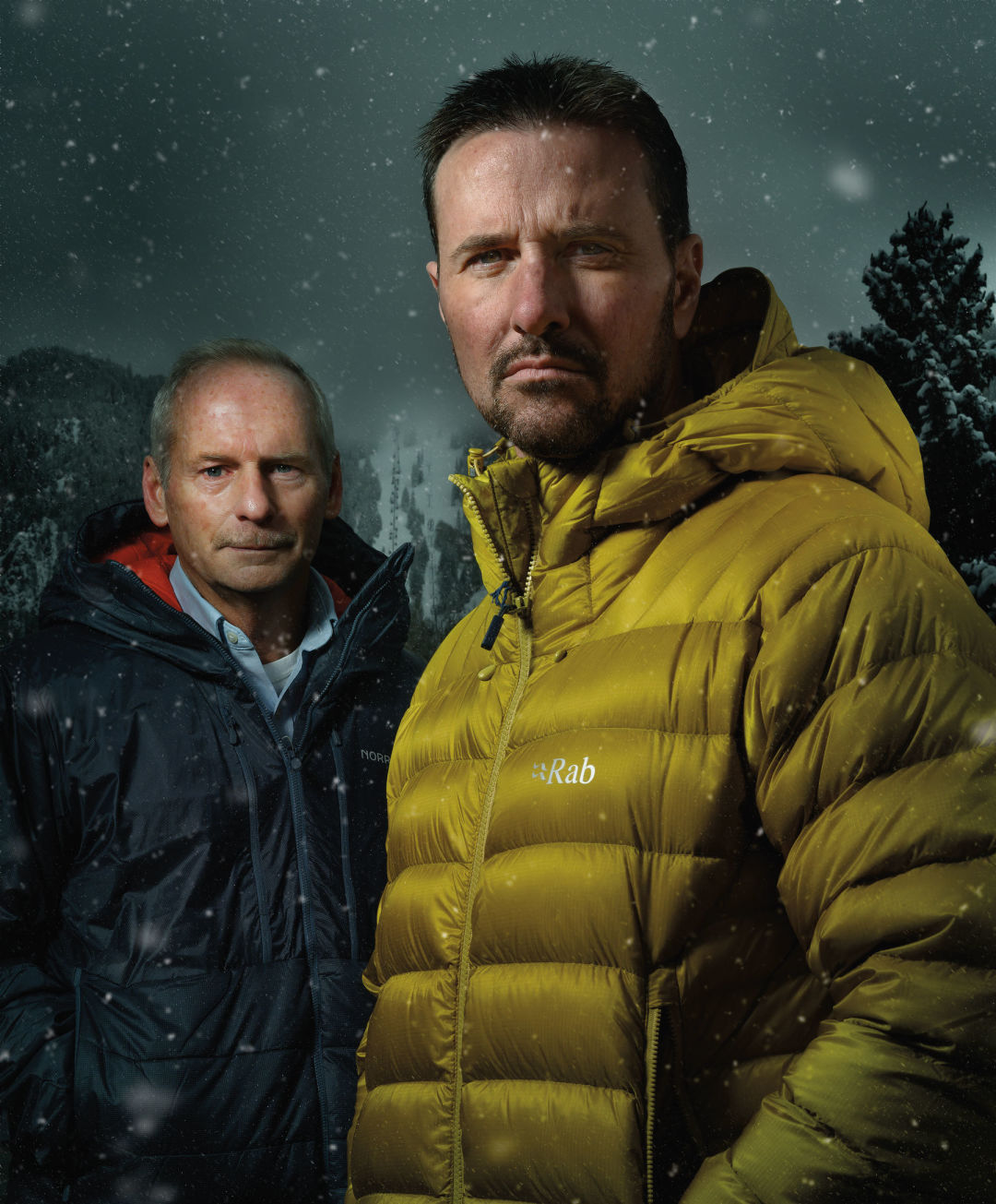A Q&A with Forecasters Cory Gates and Ryan Boudreau

Cory Gates and Ryan Boudreau
Image: Karl Wolfgang
Aspen Sojourner: How did you get into forecasting?
Ryan Boudreau: I’ve been a weather nerd since I was in kindergarten. Living in Connecticut, I was always looking out the window hoping the rain would change to snow. They sent me to the office many times because I just could not participate in school—all I cared about was the weather.
Cory Gates: Snowstorms seem to be the grabber for young people, and that’s what grabbed me too. I lived in DC and North Carolina, where it didn’t snow. Then I got a full athletic scholarship to the University of Wisconsin, the best meteorological school in the United States, so I studied weather there and got introduced to a new climate of cold and snow. I worked at
AccuWeather, at Reagan National Airport, and then 22 years in government [for the National Weather Service as a lead forecaster].
What’s the background of AspenWeather.net?
CG: When Ryan reached out to me with the idea, I said, “You’re out of your mind; not a soul is going to pay to read what I write about the weather.” But he pushed hard enough, and we slowly got it started.
RB: Cory and I had a mutual friend who said, “You need to talk to Cory Gates; this guy’s an unbelievable meteorologist.” We pow-wowed this whole idea, and my buddy offered to put up a mock website. I said, “Let’s just write this stuff up and see how much traffic we get.” Well, we were getting 5,000 to 10,000 views a day. So I thought maybe we can make a few bucks off this—Cory’s a pro, and people are listening.
What do people want to know most about Aspen weather?
RB: Everybody wants to know the full winter—they start asking me at the end of the summer what Cory is thinking. One of the craziest questions I get—and I hear this a lot—is “So, where do you guys get your weather info from?”
Obviously you’re not just watching the 10 o’clock news; how do you not only put together an entire seasonal forecast but also regularly predict such accurate snowfall for the local ski mountains?
CG: When you’re trying to do a forecast from October to May, really you’re kidding yourself, but people want to know what winter is going to be like—especially here. The key is understanding global sea surface temperatures and what’s happening in the tropics. If it’s going to be a rainy winter in the tropics, it’ll probably be a warmer winter here; a dry winter in the tropics means a snowier winter here. When you look at models for 37 straight years, you just get a feel for what the weather is going to do.
Have your predictions ever been totally off?
CG: There was one very poor winter; it was like 60 degrees the last 15 days of March. You just couldn’t have predicted that balmy a winter, so I was 100 percent wrong. In weather, you’re going to be wrong at times; it’s too complicated a science.
Have you developed a rule of thumb for Aspen’s weather? Any old wives’ tales that ring true?
CG: One thing that’s 100 percent guaranteed is that in winter, if you have a high-pressure ridge out in the Pacific Ocean at 140 degrees west longitude (essentially Alaska), we’re going to have a lot of snow and cold. In 2007–2008, the ridge stayed there over four months. We had 100 inches on the mountains every month. One bit of local lore that seems to have validity is if it’s a bad bear season in the fall, then it’ll be a big winter. In fall 2007 the bears were everywhere in September and October.
How do you think climate change will affect local weather?
CG: I’m not a person who argues that man hasn’t changed the climate, but if people think we’re going to be burning up by 2030, they’re whacked-out totally wrong. I know the people who do the climate models, and you can’t run them without inputting CO2, in parts per million, for every 10-year period. They’re overestimating the parts per million, and it’s like a runaway freight train when you change the values that much. Say we do the right things now: less emissions, more batteries, more wind power, stop polluting the oceans, stop deforesting the Amazon—say we make big improvements over the next 30 to 40 years, then CO2 is going to be close to what it is right now and the climate won’t warm 6 degrees. And there are other variables the public doesn’t understand.
RB: We’re trying to keep the stoke alive and stick with our prediction of positive snow for Aspen. You’re going to be skiing a long time here; we see great winters ahead.













































